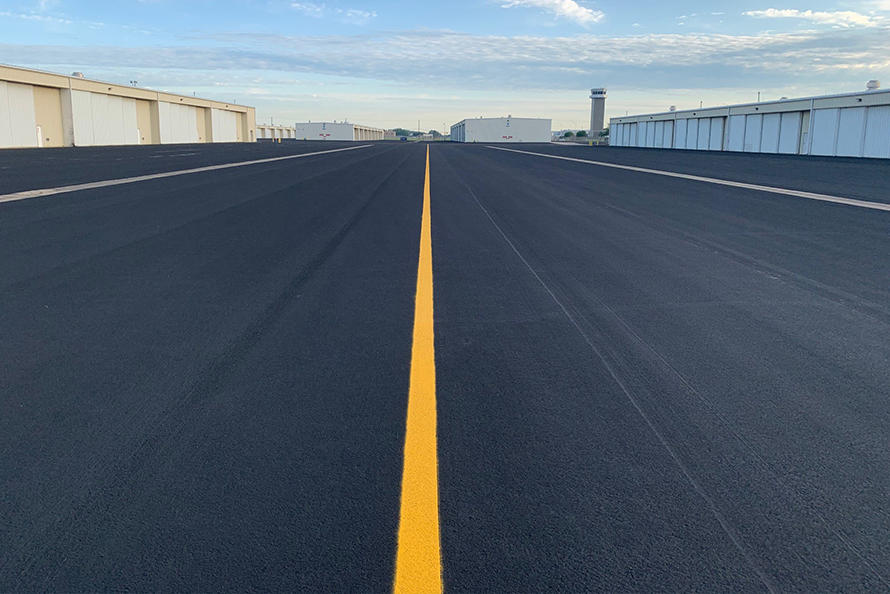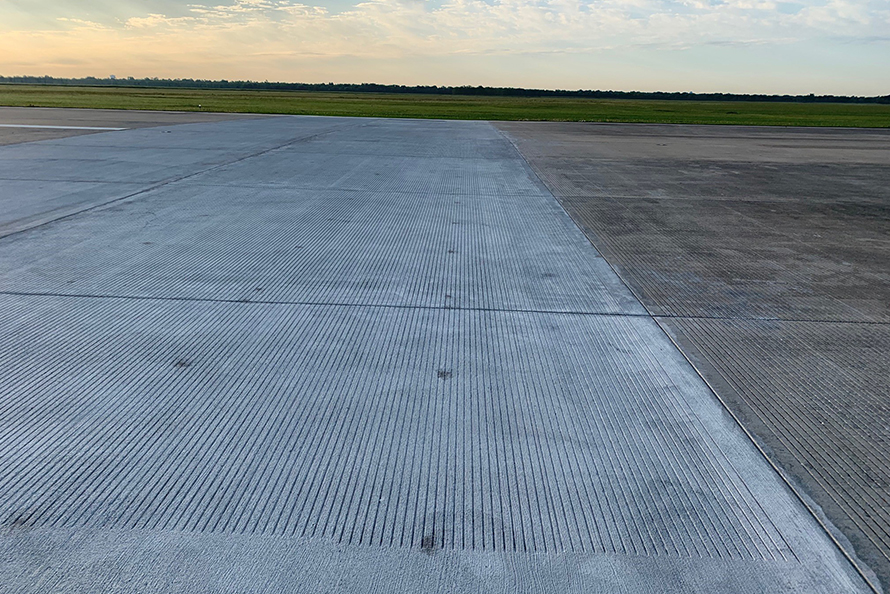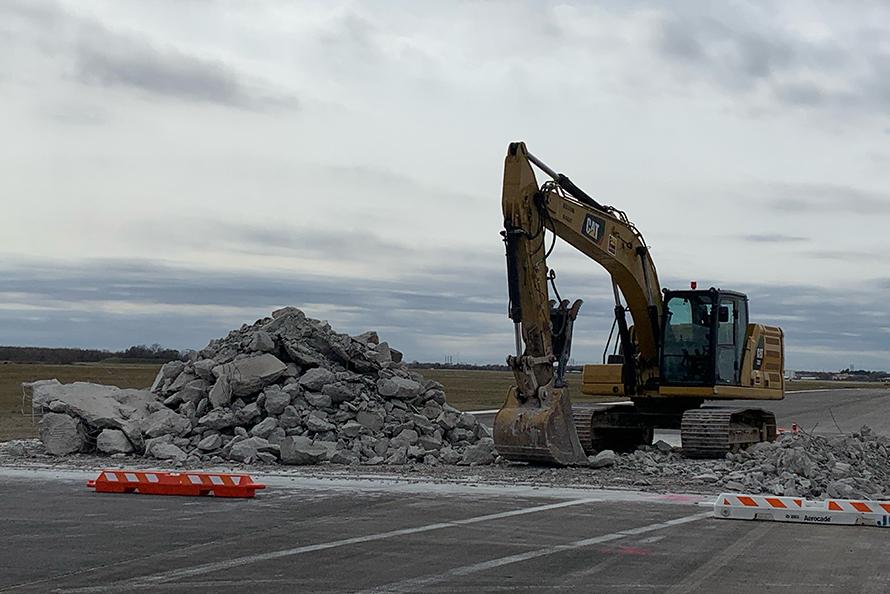High-quality infrastructure is certainly a main ingredient when it comes to a great airport. Houston Airports recognizes this and continually evaluates, invests and upgrades its infrastructure, as evidenced by a recent airfield improvement project at Ellington Airport.
“We just completed an airfield project that improved a large area of pavement to enhance our airport operations,” General Manager at Ellington and the Houston Spaceport Arturo Machuca said.
The project included several major components, including panel replacement and application of surface sealant and pavement sealant on designated areas of the airport, which is home to certain operations of the U.S. military, NASA, and a number of general aviation tenants.
Houston Airports’ Infrastructure Division led the effort, part of an ongoing capital improvement project at all three airports within the airport system. Airport Operations Division Manager Pete Fress said he’s very pleased with the improvements, all designed to further enhance the safety and security of tenants, users, travelers and staff.

"We made a full-depth replacement of eight panels on Runway 422,” Fress said. “We also applied a surface sealant on the paved safety area of Runway 4, 1,000 feet long and 150 feet wide. Additionally, we put pavement sealant on the asphalt shoulders of Taxiway Delta. We also put sealant called Grip Flex and resealed all the asphalt around all the t-hangars we have at Ellington.”
T- hangars are types of enclosed structures that hold aircraft in protective storage. Fress explained that the durable sealant prolongs the life of the asphalt.
The project took about three months to complete and greatly enhances the life span of these key Ellington features. To support the project, Ellington staff allowed for runway and taxiway closures as necessary and coordinated with the t- hangar tenants. The t-hangars at Ellington are at full occupancy. During the project, there was a three-day period where the t-hangars were not accessible to tenants as the sealant had to cure once it was applied. Tenants whose t-hangar was not accessible during the three days were provided an area on the aircraft ramp to temporarily relocate their aircraft.

Fress said the benefits of the improvements are tremendous, strengthening and reinforcing the runways and taxiways, and prolonging the life of the asphalt underneath. He said that the sealant also prolongs the life of the FAA-required paint markings and the paved shoulders on Taxiway Delta.
“Over time, the asphalt has been weathered due to extreme heat, rain and the aircraft weight. By placing the grip flex sealant on top of it, it both strengthens and prolongs the life expectancy of the asphalt,” Fress said.
The close coordination was key - Ellington further supported the project by providing the use of the Air Traffic Control tower, and providing notams, written notifications issued to pilots that advised them of circumstances relating to their flying. Pilots were notified in advance if a runway or taxiway was to be closed.
Machuca lauded Houston Airports Director Mario Diaz, senior staff and Infrastructure for continuing the push for excellence even while navigating through the COVID-19 pandemic.
“Hats off the leadership for managing through this, and the staff for working tirelessly to carry it out. I commend Director Diaz and Houston Airports for keeping the progress moving forward.”
